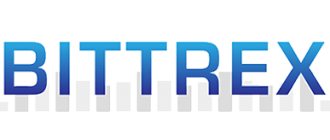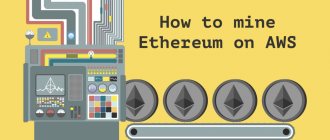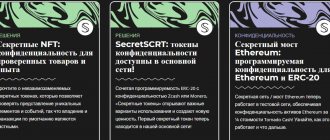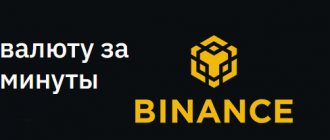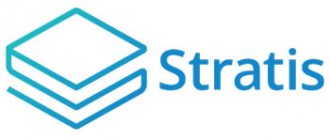Cloud storage of personal files has long become something familiar in the life of any advanced Internet user. Every day more and more users begin to use the functionality of cloud storage, which allows them to realize the main aspirations of any person who deals with large amounts of data:
- convenient access to files;
- access from any device anywhere in the world;
- savings due to the absence of the need to purchase expensive hard drives.
However, classic cloud storage has several disadvantages that spoil their reputation:
- probability of hacking;
- the ability to open the storage facility at the request of the authorities;
- the chance of a centralized server crashing at the most inopportune moment.
The Storj project (from English - storage) - a decentralized platform for cloud storage of files - is designed to solve all the main problems of technological predecessors.
The main difference from classic platforms is the absence of a centralized server, which is replaced by nodes. Any Storj user can provide the service with a portion of the memory on their hard drive and become the owner of the node. In fact, each such user will become a farmer and will receive a cryptocurrency with the stock ticker STORJ for this assistance to the project. This coin is the main one on the site and serves for mutual settlements between users who provide space for decentralized storage and platform participants who use this volume to place their files on it.
Basic information about the platform currency:
- The trading symbol is STORJ.
- Available for trading from 2022.
- The total number of coins in circulation at the moment is 135,787,539 STORJ (total coins 424,999,998 STORJ).
- Capitalization – $64,075,074 USD (111th place in the world top).
- STORJ cryptocurrency rate – $0.471877 USD (as of 08/07/2018).
- Official website – https://storj.io/
History of the creation and development of Storj
The company that developed Storj was founded in December 2014. Even then, a team of professionals in their field united with a single goal, which was to create the largest and most secure platform for a revolutionary open-source decentralized cloud storage.
Work on the project began quite a long time ago, in the relatively distant year 2014. Then an ICO was held, during which crypto investors who were interested in the project invested more than 500 thousand US dollars in it. Today this amount is not very impressive, especially against the backdrop of pre-sales of many young projects, but at that time it was very good and testified to the trust and interest of the crypto community.
Initially, the electronic currency within the project was the SJCX token, which was based on the Bitcoin blockchain. Starting in 2022, this approach began to show its inconsistency and inefficiency, as a result of which the decision was made to switch to Ethereum technologies. It was then that today's STORJ coin appeared. Despite the fact that the platform has provided the opportunity for free conversion, the old coin is still in circulation and exists in parallel with the new one. On some sites you can still find offers to buy or sell SJCX.
The transition to a new technology and a new coin allowed not only to reduce the commission fees charged to the site community (which significantly increased its popularity), but also increased the capabilities of some functional aspects of the site, along with the ease of use.
Thanks to the use and subsequent improvement of the site’s coin, the developers managed to abandon the idea of using bitcoins and other less flexible cryptocurrencies that would not be able to provide the required level of stability. In addition, the currency guarantees a certain stability to the platform itself, and also contributes to its future growth and improvement.
Minuses
There are relatively few disadvantages, but they do exist:
- limited quantity in the world of STORJ - most of the coins belong to the founders of the platform, which violates the principle of decentralized governance;
- mining is impossible – the company that created the network mined all the tokens in the first days of the network’s existence;
- where to spend STORJ - cryptocurrency is needed only to pay for services within the platform; it is not a universal means of payment.
Based on the available information, you can make an informed decision regarding the advisability of investing in this cryptocurrency.
Storj project team
The Storj project has a fairly large team, the main characters of which today are as follows:
- Founders: Sean Filkinson and John Quinn;
- Technical Director – Philip Hutchins;
- Chief Financial Officer – Matthew May;
- Chief Data Scientist – Patrick Gerbes;
- Lead developer: Brydon Fuller;
- PR Director – Dan Sorensen;
- Client Director – John Gleeson;
- Analyst – Garrett Ransom;
- Vice President of Marketing - Jon Sanderson.
All specialists have good experience both in the IT field and in the field of cryptocurrencies and blockchain. Most of the team has been part of it since the initial planning stage and is still working on the idea of providing ordinary people with the most accessible and convenient opportunity to rent out unused hard drive space and make a profit from this type of activity.
Technical details and working mechanism of Storj
Storj is a peer-to-peer network that consists of two categories of users: farmers and tenants.
Farmers are the users who provide their hard drive space and Internet connection bandwidth to the site and tenants. And tenants are those users who are interested in buying the farmer’s space and Internet bandwidth.
Company representatives are confident that such a system allows you to increase the speed of interaction with the cloud service up to ten times, and the rate of money savings for tenants reaches 50%. These indicators allow us to leave cloud servers, which began to appear a decade earlier, far behind and demonstrate the obsolescence of their concept, which in the near future will fade into oblivion due to the fact that it does not keep up with the times.
The main feature of the platform is its decentralized nature. It is this feature that has the most positive impact on the security of all data stored by tenants on farmers’ resources. All information that is loaded into the system is located not on one, but on several servers at once. It is located on many farm computers, which means that it is essentially scattered all over the globe. Even if some hacker manages to gain access to part of the information, it will not be possible to decrypt it without the remaining files, which will be in completely different places. Only its immediate owner can use the information that has been loaded into the system.
Farmers should remember that the platform only pays for the amount of allocated GB that is actually used, not for the amount that is provided. Even if you provide 6 TB of storage, you will be paid for the amount of storage that was actually used by other people within the system.
Income for the patient
For tests, we allocated 10 GB on one computer and 50 GB on a 24/7 accessible mini-server. By local standards, this is nonsense - real fans allocate terabytes for Storj. The total number of nodes in the Storj network is still small (just over ten thousand), but it continues to grow. In addition to ordinary users, there are “farmers” who specifically bought high-capacity disks in the hope of making quick money. The online calculator promised them almost a dollar a year per gigabyte, but it's all in the fine print. Looking ahead, I will say that farmers will not even be able to recoup their investments.
Accruals in Storj now occur once a month, so you will be contemplating a zero balance for a long time. Many people give up giving away gigabytes after a week, thinking that the application does not work or they were simply deceived. Only after a week of continuous operation did Storj begin to download fragments of other people’s files from the P2P network.
In reality, you can only make a profit from renting disks if you already have all the hardware, free electricity and high-speed unlimited Internet access. That is, if you don’t pay for anything, but only resell resources that, for some reason, already exist but are not used. This happens to botnet owners and administrators: clusters, servers, and just work computers are rarely used at 100%. The home user pays for everything himself, so Storj will not become a source of profit for him. At most, it will amuse you and partially cover your electricity bill.
Initially, the point of Storj was just to get some coins for idle resources. Let's say you have a terabyte drive, but only two-thirds of it is filled with movies. It will still spin the same way - be it full or empty. You can continue to fill it with media content, or you can delete the movies you watched and rent out a hundred or two gigabytes.
If you are planning to sell a kidney, buy a RAID array and engage in large-scale rental of disks, then it is better not to rush. Firstly, the kidney will still be useful, and secondly, if you estimate the investment and monthly costs, the benefit turns out to be doubtful. I am sure that if you wish, it will be cheaper to simply buy SJCX on the exchange while their exchange rate is low.
Mining Storj
The process of creating a mining farm on the Storj platform does not require a huge amount of knowledge, experience and skills in the cryptocurrency field.
The main thing to know is that you can provide the site with exactly the same number of hard drives with memory for cloud storage as the number of cores your processor has.
For mining Storj, you can use both internal hard drives and their external counterparts. But it is worth noting that for some reason the system prefers external ones, which, according to statistics, receive slightly more contracts.
Organizing a mining farm consists of several stages:
- First you need to connect hard drives with SATA connectors to your farm (be sure to disconnect the farm before connecting). If they are not empty, it is worth formatting them.
- Next, you need to go to the Storj platform and register your ERC-20 wallet inside it (read our article 7 popular wallets for storing Ethereum).
- Next, you choose how much space you want to give to the service for use and create a special separate folder for this.
- Only after this the farm is put into operation.
- All previous steps are repeated with each new hard drive in turn.
Questions about monitoring the status of a node and other important technical aspects of mining can be found by following the link to this official resource from the platform developers.
How much can you earn?
In general, there is an approximate profit calculator right on the site https://storj.io/storage-node-estimator/. Here I set my parameters, with which I launched my node at the end of August.
This is what he showed me
The system is very well thought out. During the first 9 months of operation of the node, Storj retains a percentage of the profits. The amounts withheld decrease as the length of time online increases. After 15 months, 50% of the balance is returned to the node operator, and the remainder is held indefinitely.
When the node operator executes a graceful exit, the funds will be returned upon completion of the exit. If a node operator quits abruptly (without completing a graceful exit), funds will be confiscated to compensate for the cost of data recovery caused by the sudden exit.
At the same time, the developers are already working on graceful exit, so that node operators can exit before the 15-month period and receive everything they earned with their labor.
There is an excellent article on the blog that thoroughly examines all profit calculations, albeit in English. Here is the link - https://storj.io/blog/2019/01/sharing-storage-space-for-fun-and-profit/
How much have I managed to earn so far? For the test, I chose a laptop running from the mains without a battery with a 1 TB hard drive (entirely for a node), Win10 is on a separate SSD. My node was filled only by the end of November. Now it is packed to capacity and there is no traffic on it yet (at the beginning of December).
This is how much I received in tokens. They pay every month until the 15th in 4 separate payments. As you can see, as the node filled up and traffic grew, payments became larger every month. The payment for November was already about 1,300 rubles - this is more than my payment for the Internet with digital television. Even half the monthly payment for the phone will be enough.
If we convert the tokens into fiat currency, then during the entire existence and operation of the node I received a total of $53, or approximately 3,500 rubles. You also need to keep in mind that most of the fee for the first months is withheld, since you are new and accept a lot of data. There is still little trust in the node and there is a risk of your exit, so the retained funds, as I described earlier, will be used to pay other node operators for accepting traffic to restore the client’s data (multiplying it to the required safe amount). And if your node, as is the case with mine, works well, the amount of funds withheld will decrease monthly. And at the end of the work, when the node leaves the network, everything will be paid in full. Therefore, it is worth considering this service for earning money in the long term.
It would be more interesting to distribute more Terabytes, for example 4-8, since my node filled up very quickly and I am interested in what will happen next. There is no traffic now, the client just uploaded the data and isn’t even downloading it yet. The payment will then be mainly only for the amount of space in the node.
The service also has a live forum where you can (even in Russian!) search for answers in hundreds of already created topics. All announcements and news are also posted there. Here is the link.
We will be glad to see you in our Telegram group
It was interesting? You can thank us in any convenient way on this page - Help ABCMine
You can rate the service for other users
How and where to buy Storj
You can purchase cryptocurrency on many sites that offer the following cryptocurrency pairs:
- STORJ/BTC on the CoinTiger exchange.
- STORJ/BTC, STORJ/USDT, STORJ/ETH on the OKEx exchange.
- STORJ/USDT and STORJ/BTC on the Huobi exchange.
- STORJ/KRW and STORJ/BTC on the Upbit exchange.
- STORJ/BTC and STORJ/ETH on the Binance exchange.
- STORJ/USDT, STORJ/ETH and STORJ/BTC on the Liqui exchange.
- STORJ/BTC on the Bittrex exchange.
- STORJ/BTC and STORJ/ETH on the IDAX exchange.
- STORJ/BTC on the Poloniex exchange.
- STORJ/USDT, STORJ/ETH and STORJ/BTC on the Gate.io exchange.
The highest 24-hour volume is shown by the pairs STORJ/BTC on CoinTiger ($459,223) and STORJ/BTC on OKEx ($159,368).
The lowest price in dollars was recorded on IDEX and Bitfinex ($0.408914 and $0.413490 for one STORJ coin, respectively).
The most expensive coins are sold on Bitfinex and Upbit ($0.444040 and $0.441906 for one STORJ coin, respectively).
Storj Storage Wallets
Most large wallets that support the ERC-20 standard are suitable for storing the STORJ coin.
However, there is also an official list of recommended wallets that the project team advises to use. These include:
- MyEtherWallet;
- Parity;
- imToken;
- MetaMask;
- Mist;
- hardware wallets for cold storage: Trezor / Ledger Nano S.
MyEtherWallet will automatically recognize the STORJ token. If for some reason this does not happen, it is recommended to perform the following steps to add a coin to your wallet:
- Go to the "Send Ether and Tokens" page.
- In the "Token Balances" section, select the "Add Custom Token" option.
- Enter the STORJ contract address in the Address field.
- Enter "STORJ" in the "Token Symbol" field.
- Enter "8" in the "Decimals" field.
Parity automatically recognizes the STORJ token under the acronym STJ.
imToken automatically recognizes STORJ tokens.
A short guide to managing STORJ markers in MetaMask can be found here.
Mist:
- Click on the "Contracts" button.
- Scroll down the page and click "Watch Token".
- Enter the STORJ token contract address in the “Token Contract Address” field.
- Enter "Storj Token" in the "Token Name" field.
- Enter "STORJ" in the "Token Symbol" field.
- Enter "8" in the "Decimal Places of Smallest Units" field.
There is also a wallet called Jaxx that has big plans to support Storj, but at the time of writing these plans are still pending.
